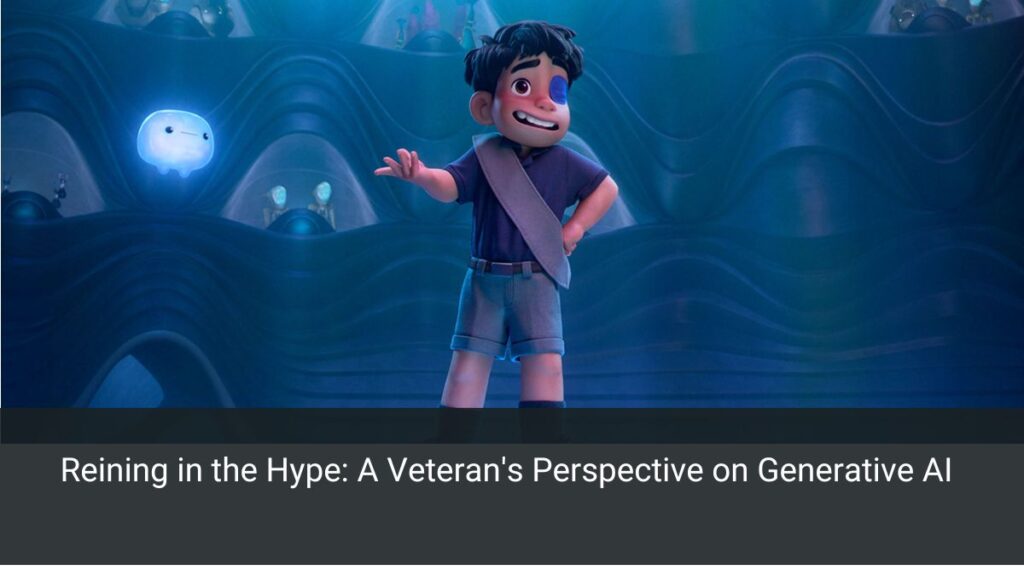In the ever-evolving landscape of artificial intelligence, few voices carry as much weight as that of Rodney Brooks. As a pioneering roboticist and the Panasonic Professor of Robotics Emeritus at MIT, Brooks has been at the forefront of AI and robotics innovation for decades. His insights offer a much-needed reality check on the current frenzy surrounding generative AI.
The Voice of Experience
Having co-founded groundbreaking companies like iRobot and Rethink Robotics, and now leading Robust.ai, Brooks brings a wealth of practical experience to the table. His tenure as director of MIT’s Computer Science and Artificial Intelligence Laboratory (CSAIL) further cements his authority in the field.
I remember attending a lecture by Brooks during my graduate studies. His ability to cut through the noise and focus on practical applications left a lasting impression. It’s this pragmatic approach that informs his current views on generative AI.
Tempering Expectations
While acknowledging the impressive capabilities of large language models (LLMs), Brooks cautions against overestimating their abilities. “I’m not saying LLMs are not important, but we have to be careful [with] how we evaluate them,” he told TechCrunch. This measured stance is a breath of fresh air in an atmosphere often charged with hyperbole.
The Human Bias
Brooks highlights a crucial cognitive bias: our tendency to anthropomorphize AI systems. When we see an AI perform a task, we instinctively generalize its capabilities, often overestimating its competence in related areas. This human-centric view can lead to unrealistic expectations and misapplications of the technology.
Practical Applications vs. Misguided Enthusiasm
The Warehouse Dilemma
To illustrate the pitfalls of misapplying generative AI, Brooks shares an anecdote from his current venture, Robust.ai. Someone suggested using an LLM to direct warehouse robots – an idea that sounds innovative but is actually impractical. Brooks explains that for time-sensitive operations like processing 10,000 orders in two hours, language-based instructions would only slow things down. Instead, direct data streams from warehouse management software provide a more efficient solution.
This example underscores a critical point: the most effective AI solutions are often those tailored to specific, well-defined problems rather than catch-all language models.
Lessons from Robotics
Brooks’s experience in robotics offers valuable insights for the AI community:
1. Constrained Environments
Success in robotics often comes from operating in controlled environments. Brooks points to warehouses as an ideal setting – predictable lighting, clear floors, and a general absence of malicious interference. This principle of starting with manageable scenarios before tackling more complex challenges is equally applicable to AI development.
2. Human-AI Collaboration
Rather than aiming for fully autonomous systems, Brooks advocates for designs that facilitate human-robot cooperation. His company’s warehouse robots, shaped like shopping carts with handlebars, exemplify this approach. This design allows for easy human intervention when needed, blending AI efficiency with human flexibility.
3. Accessibility and ROI
“I always try to make technology easy for people to understand, and therefore we can deploy it at scale, and always look at the business case; the return on investment is also very important,” Brooks states. This focus on practicality and economic viability is often overlooked in discussions of cutting-edge AI.
The Long Tail of AI Challenges
Brooks reminds us that AI development isn’t a smooth, exponential journey. There’s always a “long tail of special cases that take decades to discover and fix,” he notes. This perspective is crucial for setting realistic expectations about the pace of AI advancement.
The Myth of Exponential Growth
Drawing an analogy to the iPod’s development, Brooks debunks the notion that AI capabilities will always grow exponentially. Just as the iPod’s storage capacity plateaued at a practical level, AI systems may reach a point where further improvements yield diminishing returns.
Future Prospects: Domestic Robots and Eldercare
Looking ahead, Brooks sees potential for LLMs in domestic robotics, particularly in eldercare. However, he emphasizes that language interfaces are just one piece of the puzzle. “The problem with being able to do stuff is about control theory and all sorts of other hardcore math optimization,” he explains.
This nuanced view highlights the multidisciplinary nature of robotics and AI development – a reminder that breakthroughs often come from unexpected directions.
A Call for Pragmatism
Rodney Brooks’s insights serve as a valuable counterpoint to the often overblown narratives surrounding generative AI. His emphasis on practical applications, realistic goal-setting, and the importance of human-AI collaboration offers a roadmap for more grounded AI development.
As we navigate the exciting yet complex world of AI, let’s heed Brooks’s advice: focus on solving specific, valuable problems rather than chasing arbitrary performance metrics. By grounding our expectations in reality and embracing the challenges ahead, we can harness AI’s true potential to create meaningful, sustainable innovations.
In the words of Brooks himself, “Without carefully boxing in how an AI system is deployed, there is always a long tail of special cases that take decades to discover and fix.” It’s a reminder that the journey of AI development is a marathon, not a sprint – and that the most impactful innovations often come from patient, focused effort rather than headline-grabbing breakthroughs.

